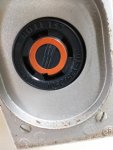Hopefully someone out there decent with these things can help me.
Prior owner of my house had a transfer switch installed with a 30A plug in the backyard.
I haven't purchased a generator quite yet, but have my eyes on this one at Costco. Not the most powerful, but I like the idea of having natural gas as an option.
My question is, why am I having the hardest time finding Male to Male L14-30 cords? Both the generator and the house plug are females.
Can someone point me in the right direction to an adequate adapter to work with a standard Male to female cord?
Thanks!
Prior owner of my house had a transfer switch installed with a 30A plug in the backyard.
I haven't purchased a generator quite yet, but have my eyes on this one at Costco. Not the most powerful, but I like the idea of having natural gas as an option.
My question is, why am I having the hardest time finding Male to Male L14-30 cords? Both the generator and the house plug are females.
Can someone point me in the right direction to an adequate adapter to work with a standard Male to female cord?
Thanks!




